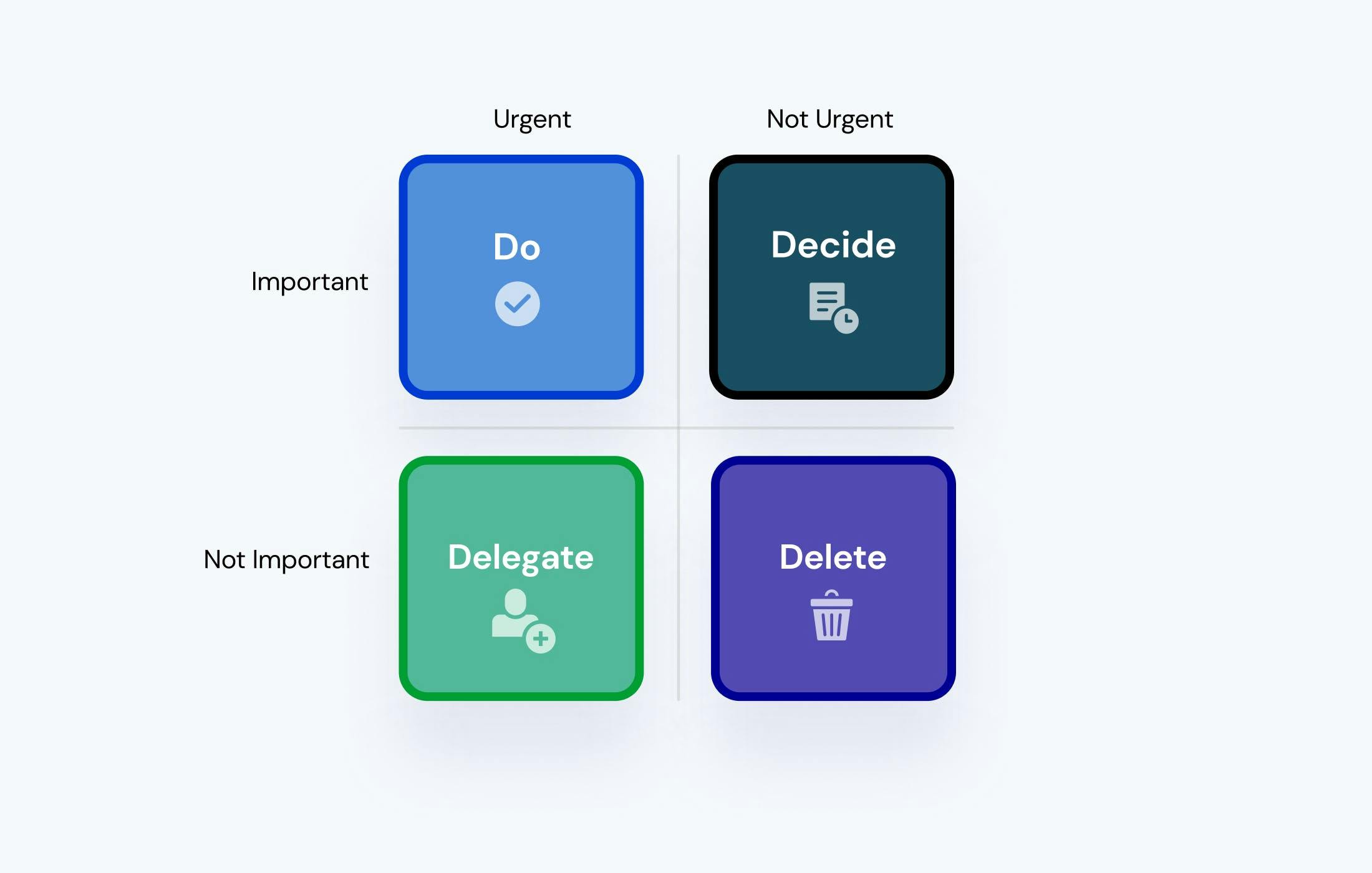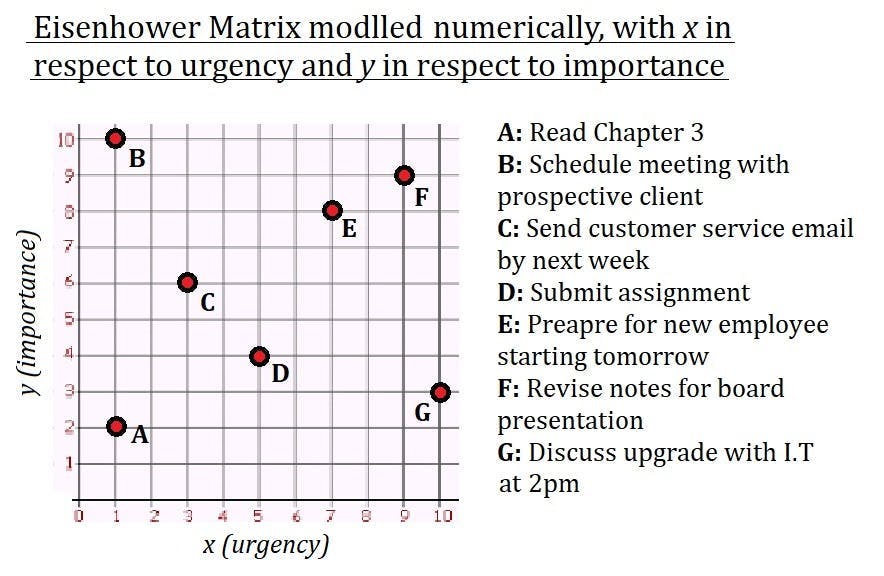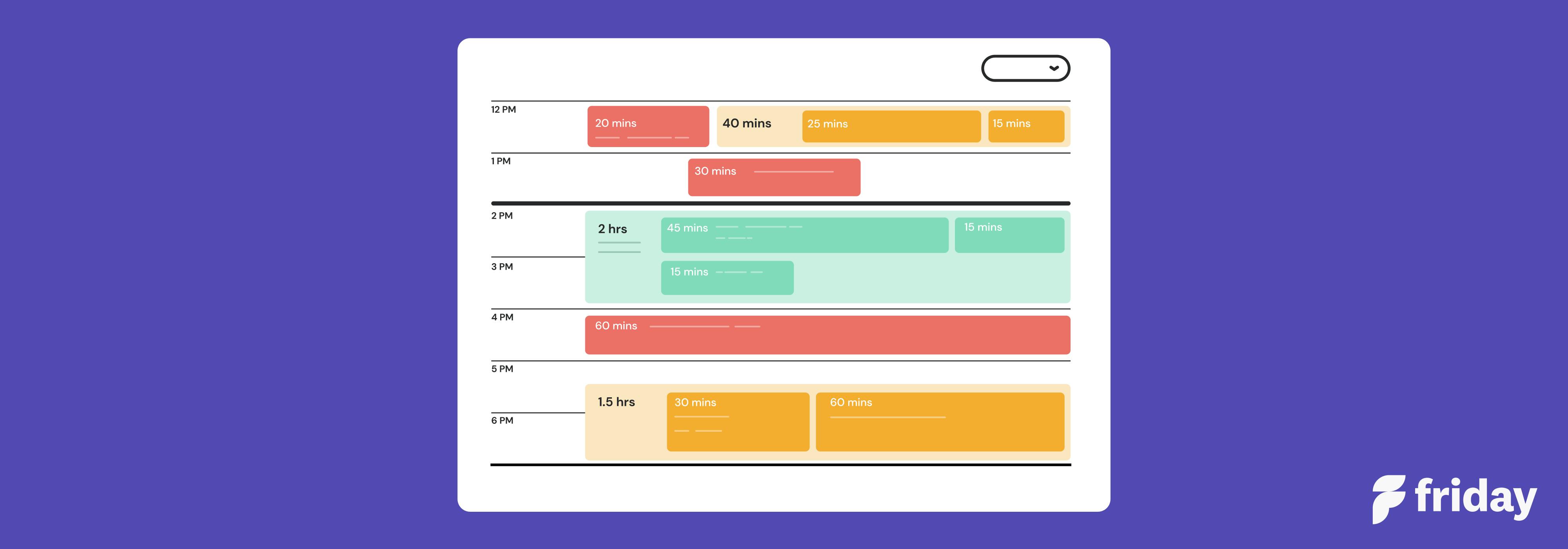The Eisenhower Matrix: How To Prioritize Your Tasks for Success

In his 1954 speech, the late American president Dwight D. Eisenhower explained, quoting from an unknown source, “I have two kinds of problems: the urgent and the important. The urgent are seldom important, and the important are seldom urgent."
It’s a very poetic phrase – the literary device is called chiasmus, if you must know – but it does appear a little confusing, at least at first.

What exactly is the difference between urgent and important tasks? How can something be exceptionally important yet not an urgent task? Likewise, why bother saying something is critically urgent if not equally as important? Enter the Eisenhower Matrix
What is the Eisenhower Matrix?
Far from being a presidential cameo in the famous sci-fi movie trilogy, the Eisenhower Matrix is simply a visual aid to help you better understand your priorities, either within a timeframe, i.e. this week, or long-term life generally.
This productivity system consists of four boxes, based around the two notions of “urgency" and “importance”, aiming to consolidate your responsibilities into blocks that allow you to effectively plan your important tasks while scheduling less pressing matters for later, or delegating them to someone else.
When defined precisely, the four boxes of the Eisenhower matrix are labeled as:
- Quadrant 1: Urgent, important tasks
- Quadrant 2: Important, but not urgent tasks
- Quadrant 3: Not important, but urgent tasks
- Quadrant 4: Not important, not urgent distractions
Much like Eisenhower’s quote, this should suggest to you that there’s great necessity in distinguishing between those two terms.
Urgency does imply importance, but it’s tired to a temporal basis, a due-date or deadline; alternatively, importance relies on conceptuality, as in what actually holds value, with reference to a goal or target.
In efforts to minimize confusion, let’s work with these loose definitions:
- Important: Self-complementary tasks that hold value and contribute towards the completion of your goals, whether personal or professional.
- Urgent: Time-sensitive duties that may or may not hold value but need to get done.
Many people’s professional lives are full of “urgent” tasks that seem to have little importance. Sending emails and filing forms aren’t usually considered important if they don’t aid you in the following of your personal dreams.
Conversely, a lot of your important tasks aren’t seen as urgent, because there is no obvious consequence for when you don’t complete them.
Not prioritizing your tasks that have actual importance can severely damage your chances of success for your long-term goals.
Therefore, the Eisenhower Matrix is an illustration of the philosophy of "urgent versus important" to provide insight into where precisely you should be allocating your energy and resources.
Why should you use the Eisenhower Decision Matrix?
In a 2018 study, Professor Meng Zhu coined the ‘mere urgency effect’, the theory that urgent matters elicit greater attention as these opportunities are seen as soon gone, even though their impact or significance is often lesser than non-urgent tasks.
In one experiment, a test group was given the option between a high-payoff, non-urgent assignment and a low-payoff, urgent assignment. In the control group, both choices were non-urgent. As you may have predicted, only 13.9% of the workers in the control group chose the low-payoff task. However, in the test group, an astonishing 35.3% of workers chose to work on the low-payoff task just because they viewed it as urgent.
The implication is that we can be easily tricked to prioritize less lucrative tasks that are framed as ‘urgent’. A time limit makes them seem important. Using the Eisenhower Matrix can increase your awareness of this unfortunate proclivity to invest energy in activities, which actually aren’t beneficial to us.
With this increased awareness, you can better allocate your time, revolving around the tasks that are most important to you. The Eisenhower Matrix is also about eliminating these bogus tasks as means to save time and thus become more productive, therefore you quickly learn that many of these “urgent”, do-or-die tasks can be swiftly thrown away with little consequence.
How do you use the Eisenhower Matrix? 4 Steps
You can think of the Eisenhower Matrix as four visually separate, but often interconnected, spaces, each of which contain a to-do list. Alternatively, just think of it as a single to-do list divided into four sections. Here are the fundamental steps you should take:
1. Decide Layout
Depending on how you best visualize things, you may want to put the different categories in different positions. This is mostly aesthetic, but you should definitely create the matrix in the way that feels most intuitive for you.

In the modern world of snappy taglines, “do, decide, delegate and delete” are commonly adopted as section headings. You can choose to follow suit or just stick with urgent and important.
Although everyone knows the Eisenhower Matrix as these four boxes, the actual divisions are only for clarity on the page. If you consider the Eisenhower Matrix as exactly that, a matrix, you can further organize your tasks by grading them along each axis.
Below is the matrix modeled numerically, with x in respect to urgency and y in respect to importance, in a professional capacity, as in tasks for the regular working week.

You don’t need to traumatize yourself by re-learning maths, but a simple 1-10 scaling might help you more easily prioritize jobs. Obviously, you could still divide into four quadrants whilst using a numerical scale, as your layout is reflective of what works best for you, meaning you have complete creative freedom.
2. To-do or not to-do
One major factor to consider is how exactly you’re going to fill your Eisenhower Matrix. There are two ways it can be done:
Filtered List: Write out your normal to-do list before filtering it one-by-one through the matrix. This method is better for those who like rapid logging or quickly writing everything down in one place
Dedicated Matrix: Go through each section in order to input your to-do list directly into the Matrix, eliminating the need for an initial list. This method is better for a slower, methodical mindset
Whichever process you opt for, the most crucial step is exactly how you make decisions and allocate activities into each square. As you may expect, it’s also the most difficult part, too.
3. Allocate the tasks
As a military man, more accurately a lieutenant turned general, Eisenhower would have been very familiar with the ideas behind allocating resources and prioritizing targets. Whilst you probably won’t be planning a global war as he did, the principle remains unchanged.
With each task, run through the criteria of each box, namely:
- Quadrant 1 - Urgent & important activities: Adds value to your life or directly benefits the completion of a goal that is time-dependent. Must be done now action items with good reason.
- Quadrant 2 - Important, but not urgent activities: adds value or benefits goals but does not have an imminent deadline. Must be done at a later date for good reason.
- Quadrant 3 - Unimportant, but urgent activities: does not add value or work towards your personal goals, but it is a commitment that must be done now or else face clear, significant consequences. Must be done now for non goal-specific reasons.
- Quadrant 4 - Unimportant, not urgent activities: These are unnecessary tasks that are a distraction. They do not add value, aid goals or have any due date. Shouldn’t be done as there’s no good reason.
As the Eisenhower Matrix is a time-management tool, highly effective people will ask themselves whether or not they should be spending time on a certain task. Give everything good consideration, but if there’s no discernible rationale, get rid of it. Obviously, there are plenty of things we have to do that we don’t want to do, so proceed with caution lest you wipe everything from your schedule except skiing, sex and seafood.
4. Revise your tasks
Once you’ve filled in your task list, the next step is to amend it when necessary. If some emergency arises, add it in; equally, if something proves to be less crucial than you initially thought, or if you miss a chance, get rid of it.
Of course, paper formats don’t offer great versatility in this sense, so you might consider using a digital scheduling format instead.
Does the Eisenhower Matrix work?
As we’re somewhat on the subject of American presidents, let’s consider the words of Abraham Lincoln, who said “give me six hours to chop down a tree and I will spend the first four sharpening the ax.” Reverence towards planning is a common theme amongst the uber-successful, so starting your day with a little strategizing will surely boost your productivity.
P. Lally and B. Gardner’s 2011 article, backed-up by a great deal of academic research for the significance of planning on goal achievement, argues that “people can fail to act on their intentions when the opportunity to act presents itself because they forget to enact their intended action,” with “one important approach [being] the formation of a plan.” In simpler terms, we can easily forget to do as we intended without the use of effective planning.
Jotting out a matrix a day is an active step towards goal-commitment. You don’t need to win any art prizes, so you can make it a 3-5 minute process.
However, many do report that the process can be far more time-consuming, so if you’ve not got room for a daily matrix, you can still work within a weekly or monthly timeframe.
You’ll not only make yourself more aware of how you’re spending time, but also increase your self-analysis skills, the most immediate precondition for better productivity practices.
Using the Eisenhower Matrix as a Productivity Tool
Although its shape is a 2x2 grid, the Eisenhower principle can be presented anyway so long as it segregates your tasks and objectives into the four subdivisions. Whether you choose to create a 4-column table in a Bullet Journal – as part of a monthly spread or future log – or a section of a digital planner like Friday, the core functionality remains the same.
In fact, digital platforms may better lend themselves to this model, as you will be able to revise tasks, freely moving them around, or simply get rid of complete items and projects. You can implement Eisenhower’s principle, as well as other productivity tools, within something like Friday’s daily planner, or as recurring prompts in your routines.
Exactly where you create your Eisenhower Matrix is down to you, but there are clear advantages to categorizing and visualizing the urgent and important tasks of a given day, week or month.
We may all naturally fall victim to the “mere urgency effect” sometimes, but our tendency to put-off actions that will likely bring stronger happiness (important) in favor for those that are just currently in the way (urgent) can be controlled. Careful planning is a step in the right direction and works wonders.
Whilst Dwight D. Eisenhower’s planning tool is a way to think about urgency as semi-independent from importance, perhaps your decision to make your own matrix is both. If you do have any reservations, have your friends send you an ‘URGENT: Eisenhower Matrix’ email and see how you feel.


